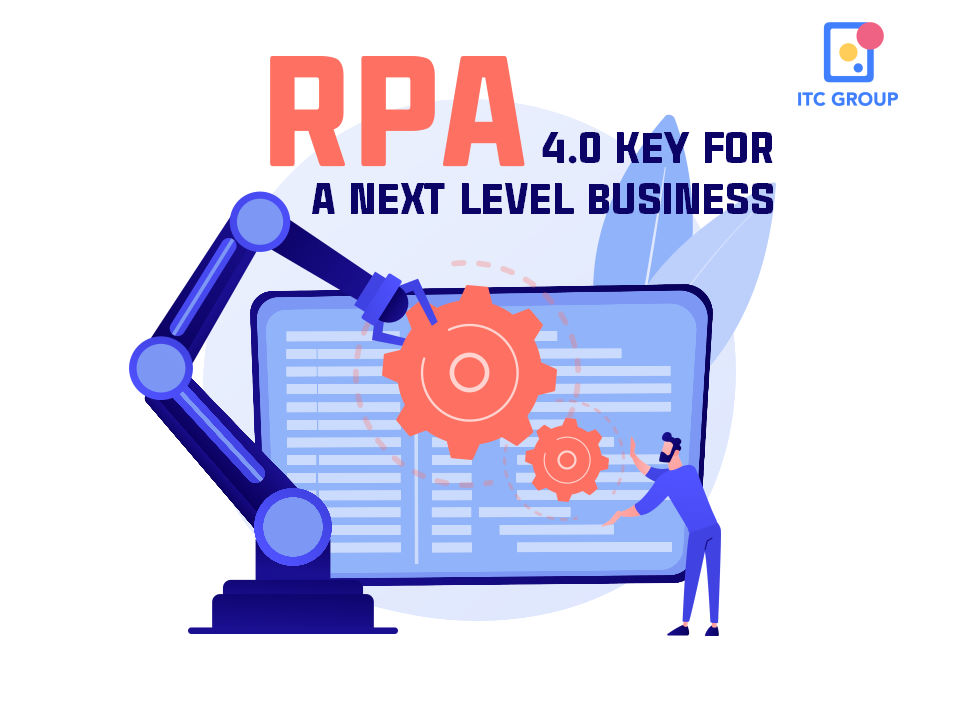









Digital transformation has currently changed the race to be a more profitable, flexible, and responsive business. There’s no longer a frame when businesses have to take much time and budget for processing conventional and repetitive tasks. RPA has appeared as an innovative technological solution for organizations as well as businesses to minimize their operating procedure time and take advantage of this opportunity for other expertise development.
RPA is Robotic Process Automation, a technology solution for businesses to automate tasks or processes with the help of robots or AI software, which is machine learning integrated.
For human roles, RPA software can do mundane and repetitive tasks like document identification, data extraction and entry, navigating systems, and a couple of simple actions. However, software with machine learning technology can tackle it faster and more consistently than people, without break-time or unexpected attitudes.
As a result, RPA helps businesses reduce human intervention and remove tedious tasks from employees’ routines. They will have more time to focus on their specialty, feel more satisfied with their workdays and your company’s efficiency will significantly increase.
In a manner showing much potential, RPA also plays a business analyst role. It can not only have the ability to automatically run installed algorithms but also analyze numbers, measure parameters, identifying patterns, predict future and make optimal decisions based on past results
Companies that commit to pursuing RPA typically face two ways to apply RPA to their business processes. It is to build your platform or to buy it.
Building an automated process costs a lower initial budget, but it takes lots of time and effort depending on your number of business cases, the complexity of business cases, third-party tool dependency, environment, and application availability.
Read more: The Future Digital Work Force: Robotic Process Automation (RPA)
For example, Airbnb, an American online marketplace for lodging, homestays, and tourism activities, took three months to familiarise themselves with the market and what to build on their platform and four years to build it. On a larger scale, Uber faced several challenges with building and deploying machine learning models within 5 years. And Netflix spent more than four years developing its platform, which has been improved up until the present.
Contrarily, buying a developed RPA platform saves more time and headcount to build.
However, a selected few employees should have a pre-established series of skills training programs to adapt to the new RPA workflows as soon as possible. Additionally, to assure that the transformation is in line with your business model, coordinating with external software providers also requires a lot of effort to customize a suitable and productive process.
Despite the impressive changes RPA can make for companies, we cannot claim that this AI process is the most crucial element in the transformation. There are some concerning aspects that we had better consider before applying machine learning to the business process:
Some people are not aware of particular details or understand their process. That subsequently led to an unclear RPA strategy. Without a proper plan for how RPA is going to be used, we cannot choose an RPA model that is suitable for our company. Accidentally, we drive our effort, taking more benefits into vain, even if all has gone smoothly. So defining what your business problem is and designing a clear picture of RPA software that can optimize your business process is one of the first fundamental steps
Basically, a machine learning platform is an analysis and processing system, and what it needs to operate on is its input, which is data.
The data used to train the model is not only meant to prove the functionality of the model but can also be used to train a working model that is incredibly tricky to collect.
For example, if I work in quality assurance at a production line, and I want to know the average quality, I have to interact with reality to audit whether the products meet the standard quality or not. “If I say none of the products won’t meet the standard, I will end up with a percentage of 99% passed products.”
This is just an imaginable example. In practice, what you need to do is make a great effort to understand real-world business problems and data stories to determine high-quality and accurate data that can be used to train and utilize your working model.
Read more about Data: Benefits and applications of Big Data in business operation
Besides these above concerns, other elements affect your business automated process, selecting your RPA vendor accounts for a large percentage of the success of your project.
Each company has unique needs. To fulfill them, they need RPA vendors who understand your business’s insights and offer customized software solutions that can accelerate your business process and improve the company’s profit.
The technical ability of your providers should be verified because ERP is a new method in the IT field, which requires a skilled and dedicated team that lets your atomizing business process come true. In this term, ITC Group, a software, and technology company with an experienced and skilled team, is always willing to give you innovative solutions, modern technologies, and mature process consulting that brings sustainable growth and consecutive success for your business. Contact us and let us help you catch up with this modern technology for a better digital future.
Stay ahead in a rapidly changing world with our monthly look at the critical challenges confronting businesses on a global scale, sent straight to your inbox.